









At Central San, we continually challenge ourselves to find better ways of serving our customers and protecting our planet. Delivering on that promise of exceptional service includes making sure our sewer pipes, treatment plant, and other facilities are in top shape and ready for future gener ations. We regularly repair and replace parts of our aging system to ensure continued reliability, meet the changing needs of our community, and enhance sustainability. In the past two years alone, we’ve completed several critical capital projects throughout our service area. Through proactive main tenance and state-of-the-art technology, we’re also working hard to get the maximum use from every mile of pipe and maximum value from every dollar. You can read more about these efforts on the following pages.

That drive to be better every day also is the impetus behind value-added services like our Household Hazardous Waste (HHW) Collection Facility. When we opened HHW in 1997, our vision was to provide our customers with a convenient place to dispose of household items that can threaten public health and the environment. The facility has more than lived up to that promise. With your help, over the past 25 years we’ve collected over 47 million pounds of hazardous waste for reuse, recycling, or safe disposal. We’re excited to celebrate this success with you! We hope you’ll drop by in the coming months and be part of HHW’s 25th Anniversary festivities. See page 9 to learn more.
There’s no finish line when it comes to exceptional service. Instead, it’s an ongoing journey of innovation and improvement. We’re grateful for your trust and will continue striving to exceed your expectations.
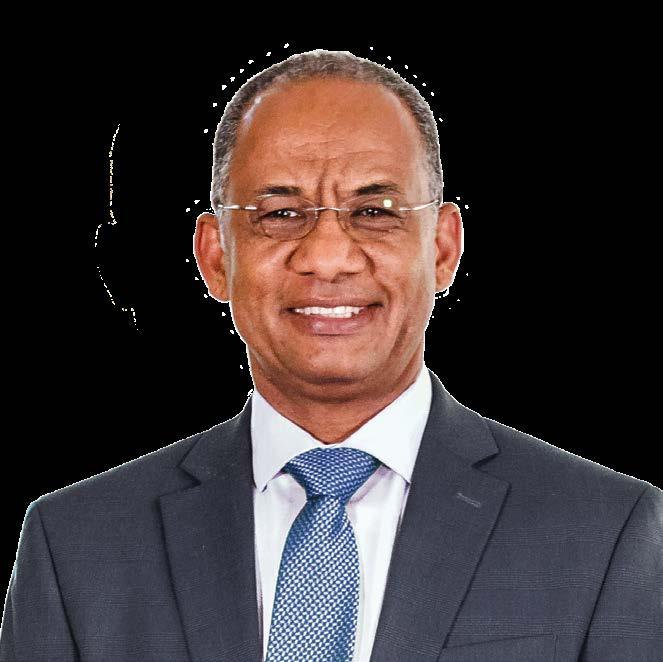 Roger S. Bailey General Manager
Roger S. Bailey General Manager
Despite the challenges of the pandemic, we’ve worked hard over the past two years to complete several significant infrastructure projects. These improvements will help ensure our pipes, pumps, and treatment plant continue to function properly now and into the future.
We replaced over 13 miles of aging neighborhood sewer pipes in Martinez, Walnut Creek, Pleasant Hill, Danville, Lafayette, and Orinda. We also completed major renovations to three large pump stations essential for the continuous delivery of wastewater from Orinda and Moraga to our treatment plant. Next up? We’re upgrading three additional pump stations serving Martinez and plan to replace 6 miles of pipe throughout our system this fiscal year.


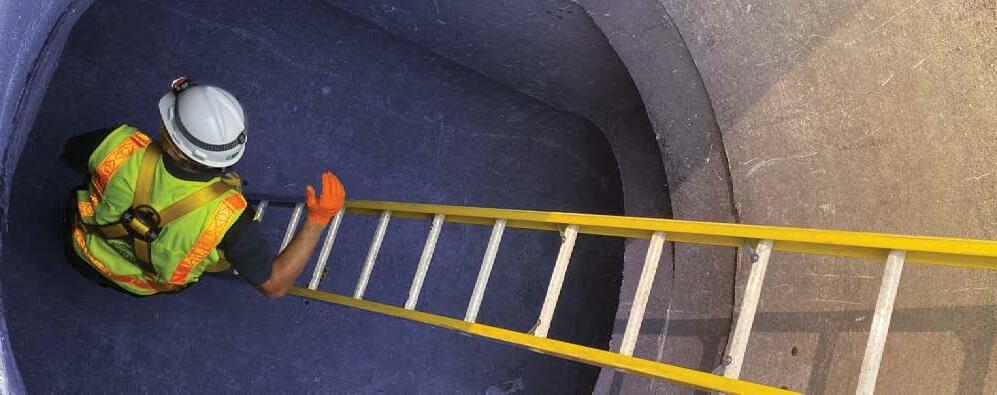
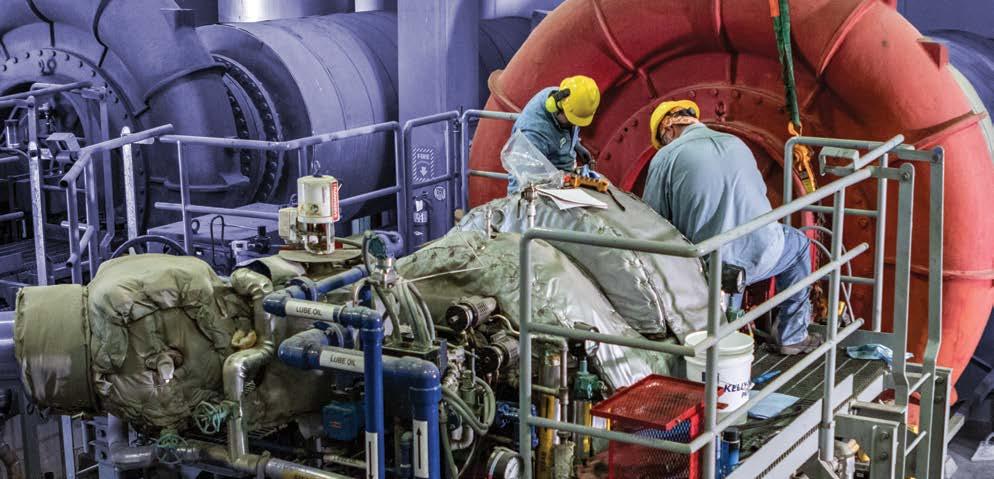
We completed comprehensive condition assessments of our aging steam and aeration blower systems. These large, complex systems capture waste heat from our incinerator and convert it to steam, which in turn drives the blowers that aerate our second ary treatment tanks. The abundant oxygen supports beneficial bacteria that consume and break down pollutants in the wastewater. We’re now working on needed renovations to support this critical treatment process, including installing new electric blow ers and designing seismic and other upgrades.
We rehabilitated the mechanical equipment and concrete structures where wastewater enters our treatment plant and cleaning begins. We also completed a series of critical inspections and improvements to our outfall. Originally constructed in 1958, this 6-foot concrete pipe carries cleaned water from our plant nearly 4 miles to Suisun Bay, where the water is safely returned to the environment.
We completed construction of new storage facili ties that will hold 6 million gallons of recycled water ready for distribution. We also began work on major upgrades to our Recycled Water Filter Plant, including pilot testing advanced treatment technologies. These improvements will help ensure the continued reliability of our recycled water system and support expanded capacity for the future, helping to save our community’s precious drinking water supplies.
Taking good care of our pipes, treatment plant, and other facilities ensures that we’re getting the maximum use out of them—and the maximum value for your rate dollars.
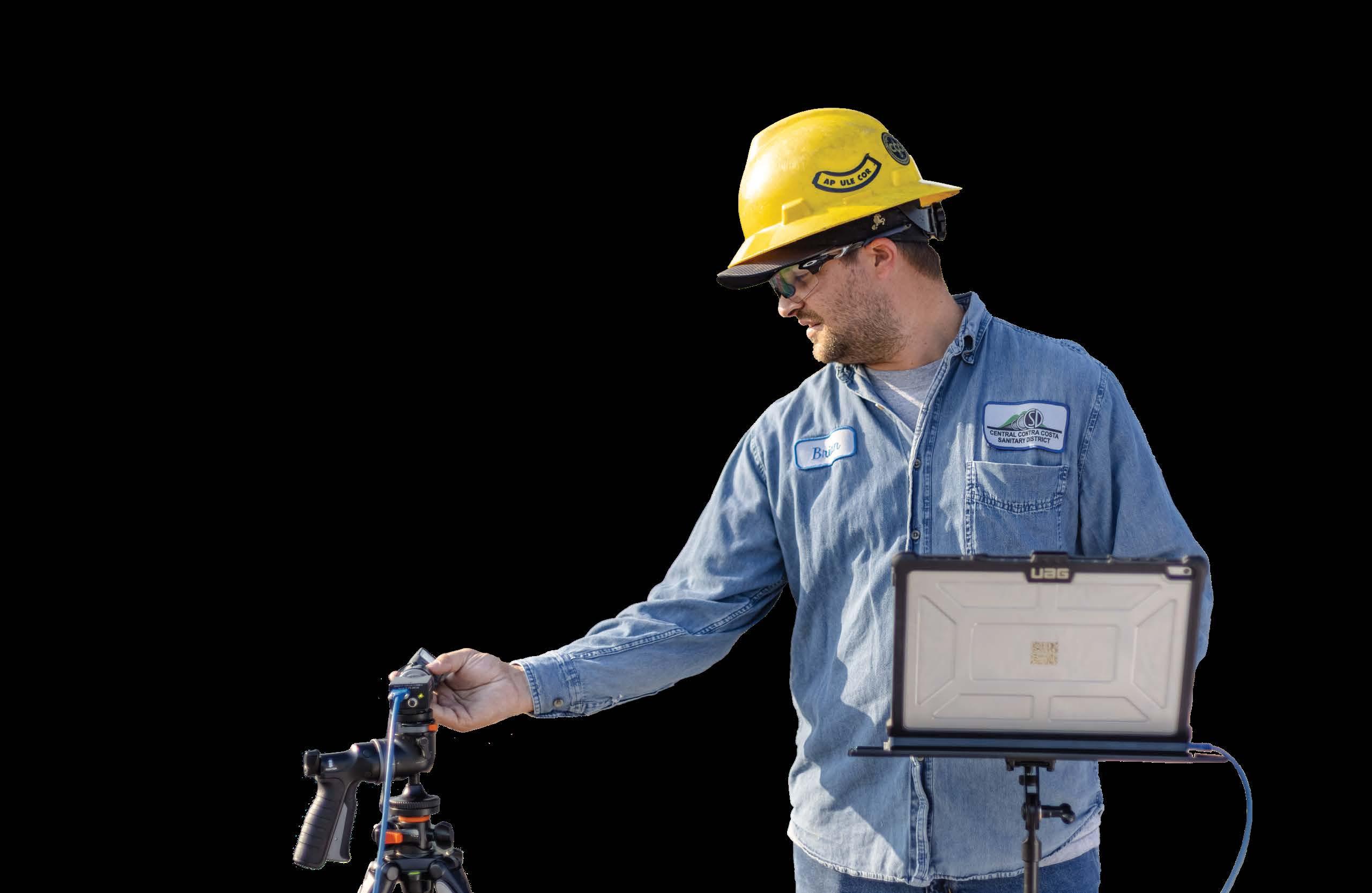
Central San maintains more than 1,500 miles of neighborhood sewer pipes to carry wastewater from homes and businesses to our treatment plant in Martinez. To keep wastewater flowing smoothly, we clean about 800 miles of pipe every year to remove roots, grease, and grit. We use video cameras to inspect about 150 miles of pipe per year, helping us find and fix issues early. We’re also piloting state-of-the-art lidar and 3D map ping technology to assess the condition of our largest sewers and plan for long-term repairs.
Pipes, tanks, pumps, instruments, machinery, buildings—our collection system and treatment plant encompass thousands of facilities and pieces of equipment. How do we keep track of it all? We use a sophisticated, integrated suite of software tools to monitor everything from when a particular pipeline may need to be replaced, to how many spare bulbs we have in inventory for our ultraviolet disin fection facility. Having the best data readily available helps us make the right decisions, at the right time, at the right cost to ensure safe and reliable service for our customers.
Our proactive maintenance program uses cutting-edge technologies to optimize the performance and extend the lifespan of our facilities and equipment. Thermography lets our maintenance technicians see hot spots and identify potential hidden electrical prob lems. Ultrasound helps them hear changes that could indicate an impending bearing failure. And motion amplification (pictured below) helps detect subtle vibrations—signs that a piece of equipment may be loose or imbalanced. By catching irregularities early, our technicians can make repairs before small issues lead to bigger problems.
Central San regularly maintains, repairs, or replaces sewer lines and other parts of our wastewater collection system to ensure trouble-free service for our customers. Our construction projects may cause short-term inconveniences, but they provide long-term benefits for you and your neighbors. We appreciate your understanding!
Here’s what we’re currently working on (estimated completion dates in parentheses).
DANVILLE, PHASE 4 will replace approx imately 1.75 miles of sewers primarily in the Greenbrook, Del Amigo, Creeks of Alamo, and Camille neighborhoods of Danville and Alamo. (January 2023)
WALNUT CREEK, PHASE 16 will replace approximately 2.0 miles of sewers in the Castle Hill, Walnut Creek Estates, San Miguel, Larkey Park, and Pleasant Valley neighborhoods of Walnut Creek. (June 2023)
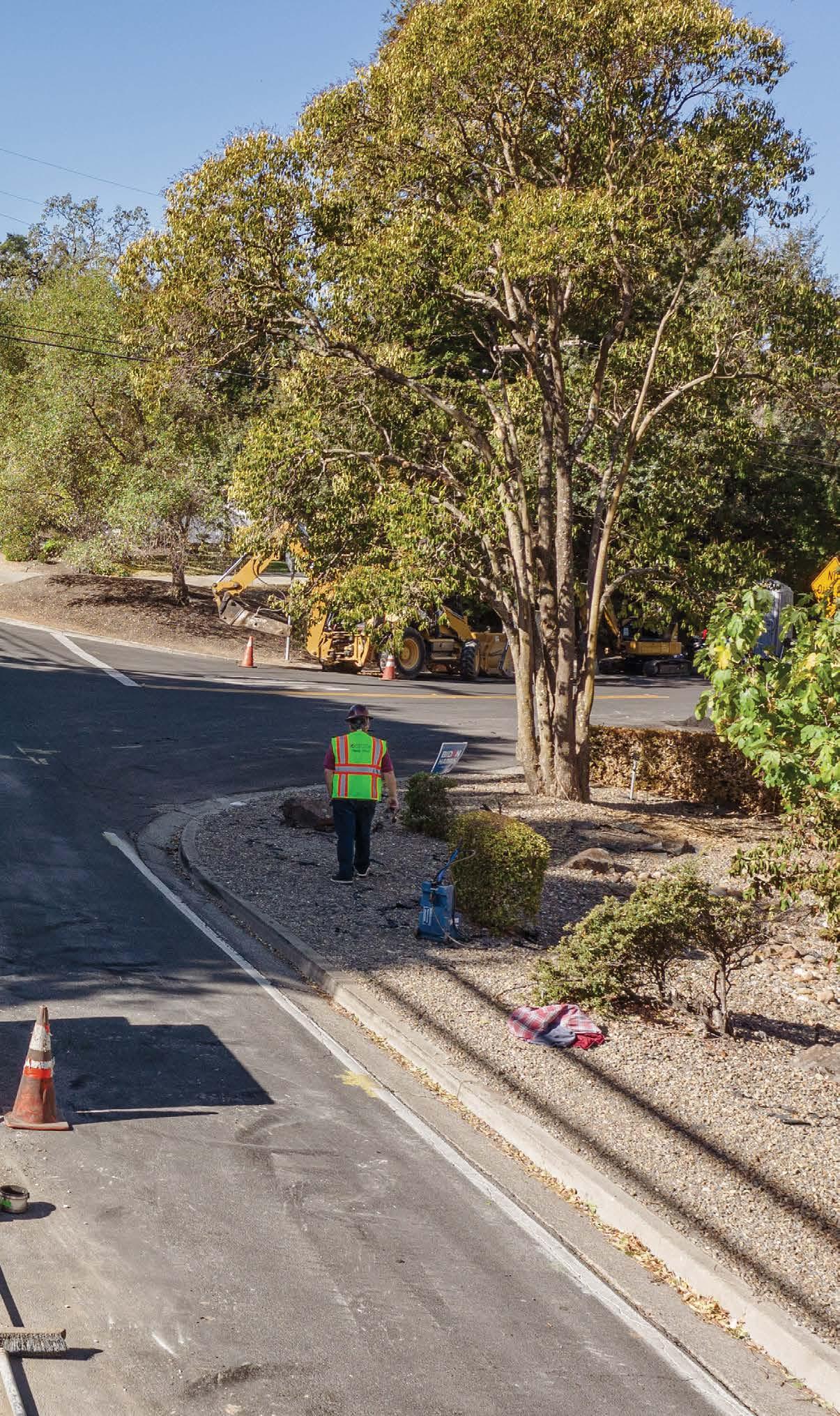
MARTINEZ, PHASE 7 will replace approx imately 1.25 miles of sewers along Alhambra Avenue (Escobar Street to Soto Street, C Street to F Street, and at H Street) as well as on Escobar Street (Alhambra Avenue to Berrellesa Street). (June 2023)
SOUTH ORINDA, PHASE 9 will replace approximately 2.0 miles of sewers primarily in Overhill Road, Scenic Drive, Valley Drive, Leslee Lane, and Lavenida Drive, as well as various locations in Orinda, south of Interstate 24. (September 2023)
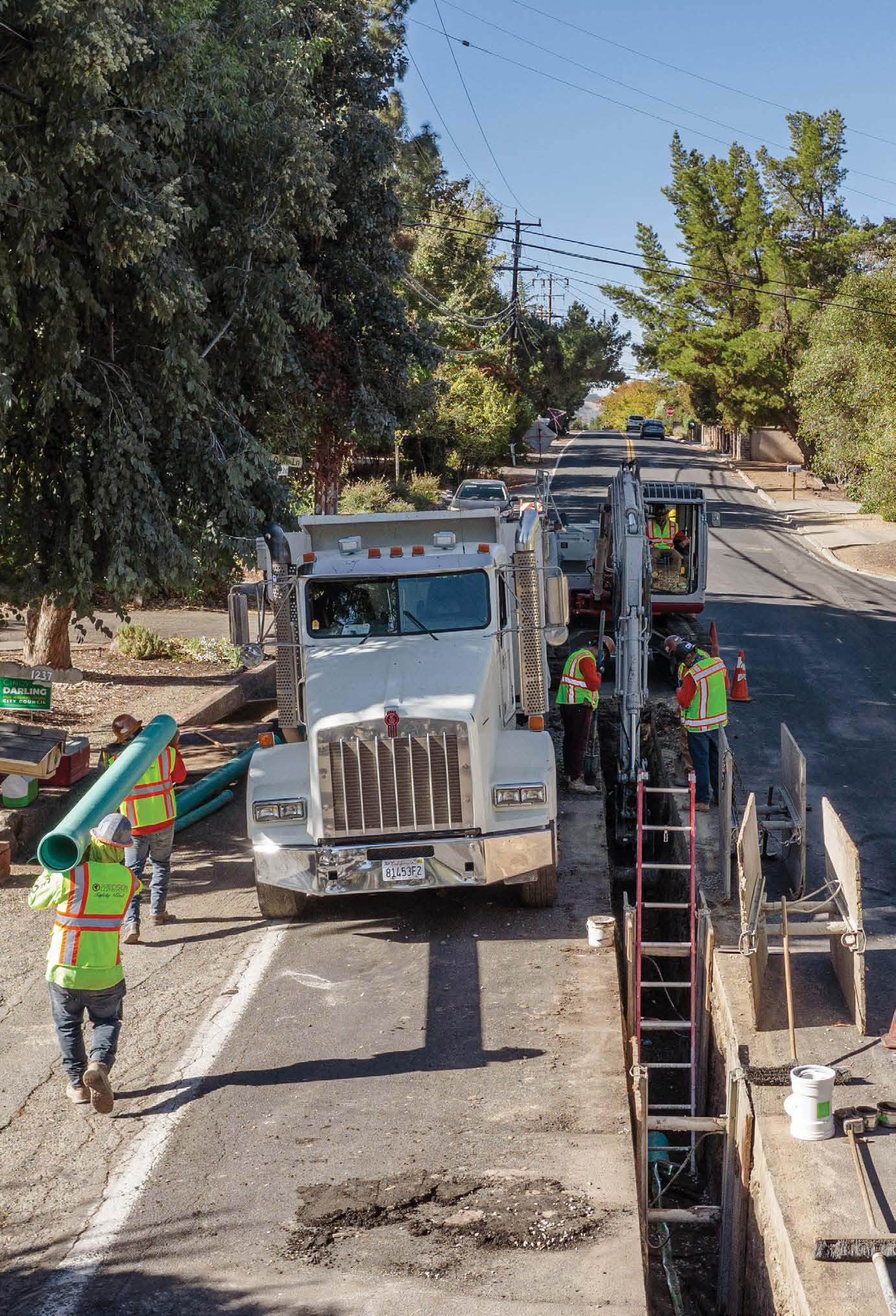
SAN RAMON PUMP STATION ELECTRICAL UPGRADES will replace major electrical equipment at a pump station in San Ramon. (December 2023)
PUMP STATION UPGRADES PROJECT, PHASE 2A will replace 2 pump stations in Martinez. (December 2025)
To learn more about these or other construction projects, please contact Senior Community Affairs Representative Chris Carpenter at ccarp@centralsan.org or (925) 229-7200, or visit: centralsan.org/construction
From July 2021 to June 2022, Miroslav Borissov visited Central San’s recycled water fill station 361 times—that’s commitment!
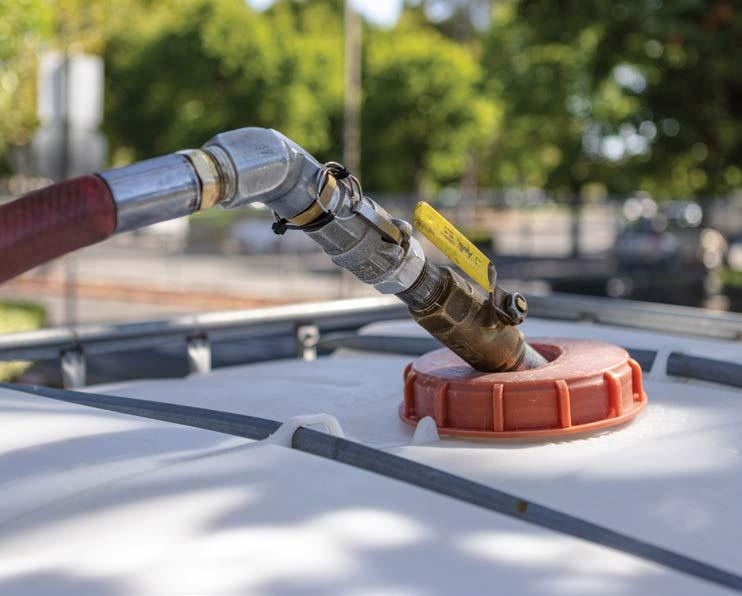
Miroslav collected 99,275 gallons of recycled water for irrigation use, helping save precious drink ing water supplies. Thank you, Miroslav, for being a dedicated recycled water customer.
The new SAGE Veterinary Centers in Concord is planning to save lots of water for their precious patients. Upon development of the site, they connected to Central San’s recycled water system to irrigate their landscaping, with a plan to use at least 145,000 gal lons of recycled water per year. Thank you, SAGE, for caring for our pets and conserving water!
Rossmoor community has shown outstanding commitment to pollution prevention and sustain ability. Through a partnership with At Your Door Special Collection, Rossmoor maintains a drop-off collection box for unwanted or expired medications. This provides residents with an easy, environ mentally friendly way to dispose of these items, just steps from home. Rossmoor also regularly airs Central San’s Public Service Announcements on Rossmoor TV, educating residents on how they can help prevent pollution. In addi tion, the Sustainable Rossmoor organization oversees a full cal endar of projects and activities.
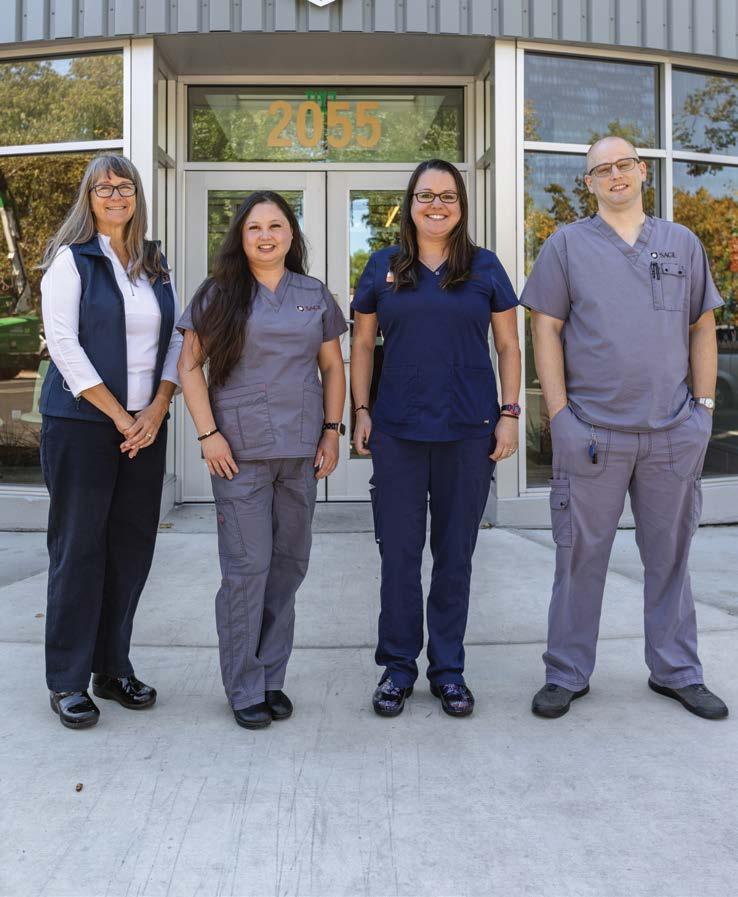
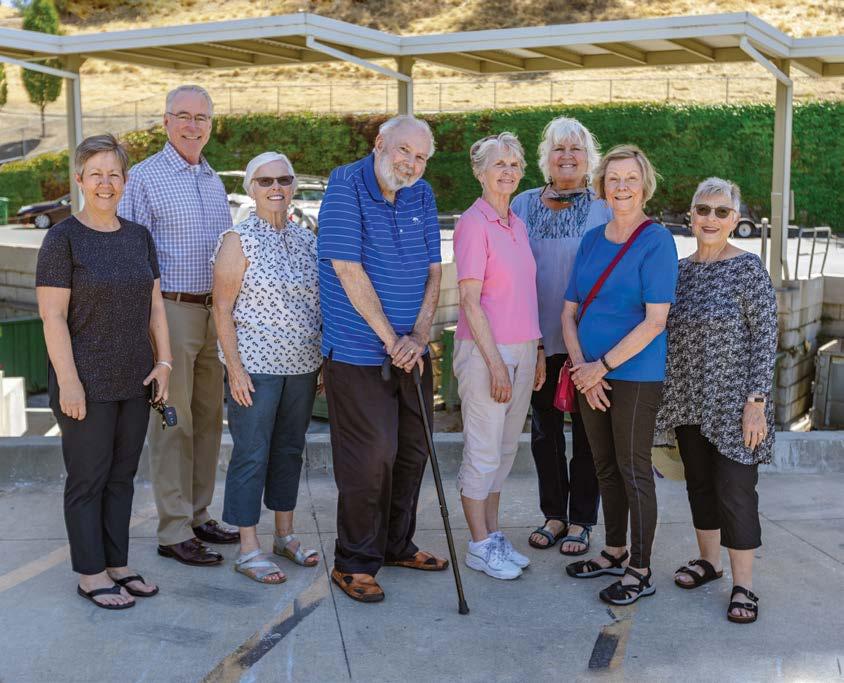
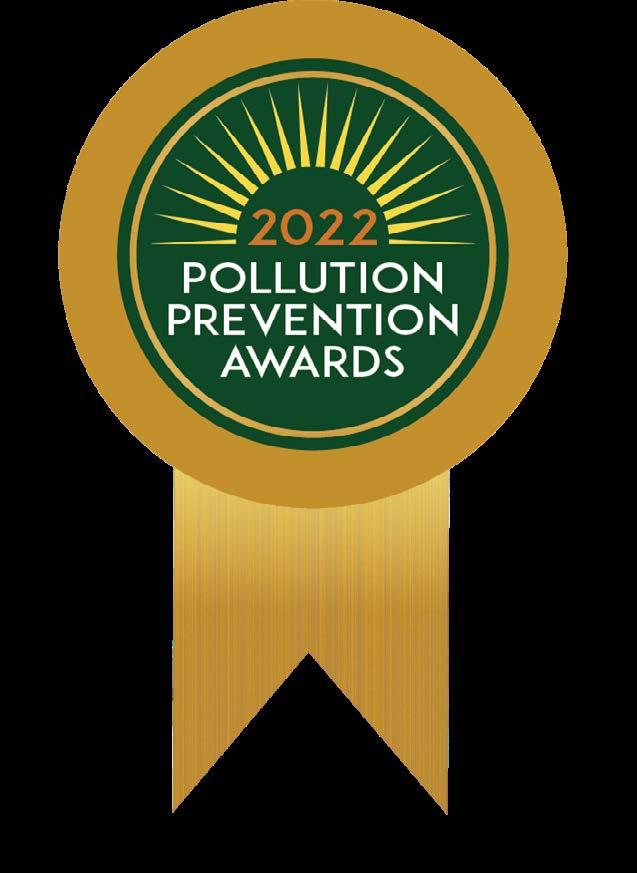
Every year, Central San teams up with Sustainable Contra Costa to celebrate those who are helping keep our community healthy, beautiful, clean, and resilient. This year’s winners were honored at Sustainable Contra Costa’s 14th Annual Sustainability Awards Gala in September.
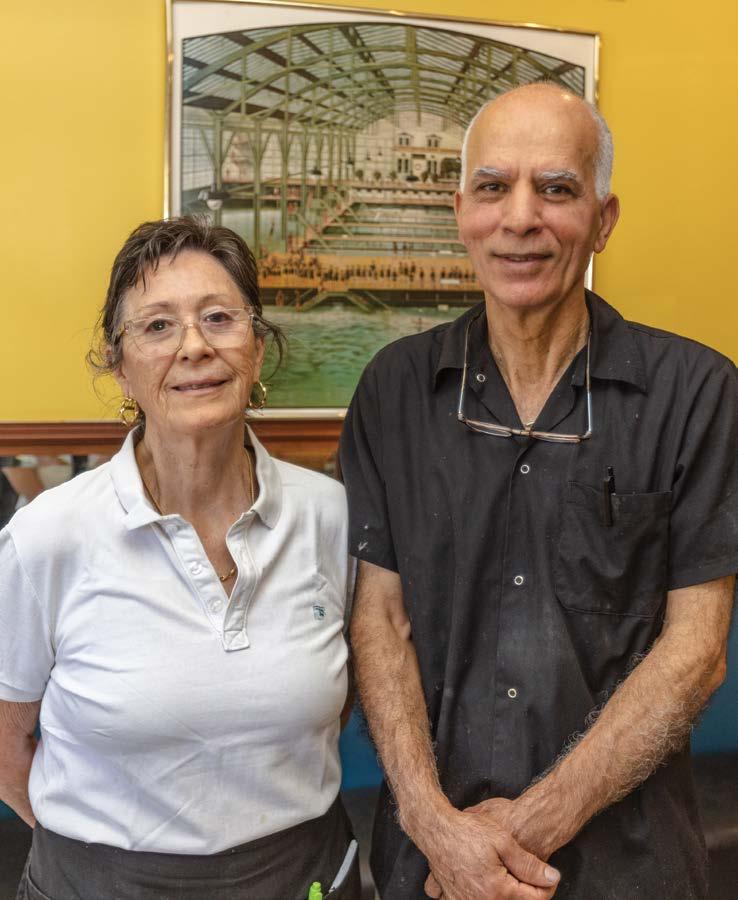 BITA L. MATIN, DDS
BITA L. MATIN, DDS
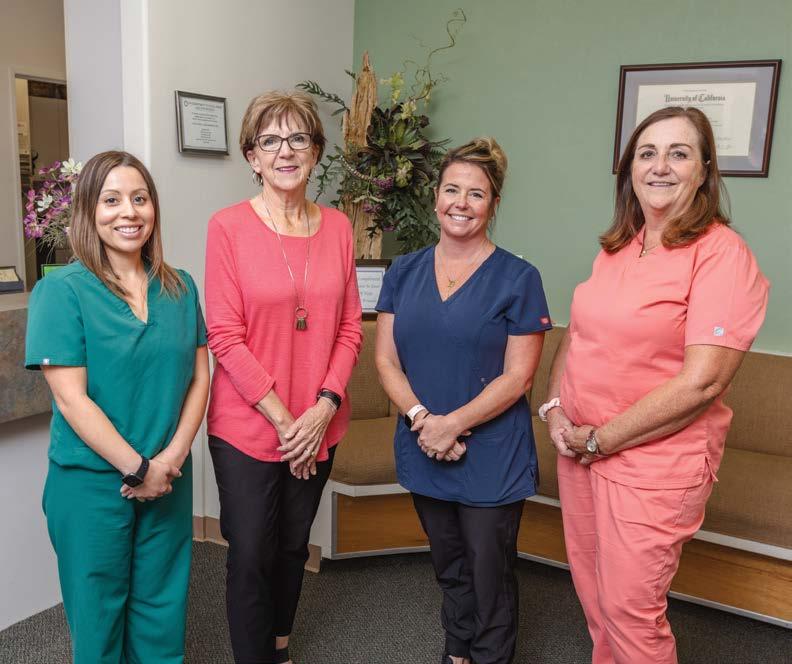
Dr. Bita L. Matin is leading the way in the dental industry, investing in new technologies that exem plify pollution prevention. Since 2016, her operation has replaced highly toxic, “cold sterilization” chemicals used for instrument cleaning with steam sterilization; transitioned x-ray imaging from wet-chemistry film develop ment to digital technology; and replaced mercury-containing tooth filling with composite mate rial to reduce mercury pollution. Dr. Matin sought out substitutes for single-use plastic items like suc tion tubes. She also is moving to biodegradable models made from renewable sugarcane. In addition, Dr. Matin and staff implemented more frequent routine mainte nance of equipment that removes mercury from wastewater dis charged to the sanitary sewer.
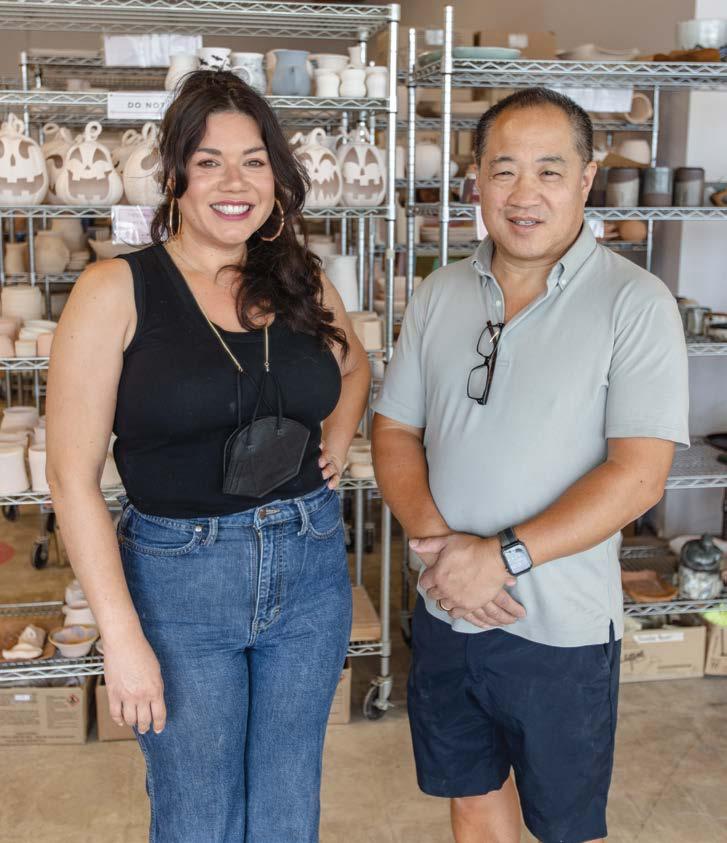
Red Ox Clay Studio is a ceramic arts studio offering classes for all experience levels. To prevent waste, they wash tools and equip ment in a 3-can series, allowing clay to settle out of the wash water so it can be reprocessed into use able product. They use the dirtiest water from the first can to water plants and dispose of the residual through a pretreatment device to the sanitary sewer. Wash water from the second and third cans is then moved up in the cleaning sequence, saving fresh water. Clay solids captured by the pretreat ment device and leftover scrap clay also are reclaimed for future use. Through these practices, the studio is conserving resources and reducing costs as a bonus.
Rising Loafer Café & Bakery is a second-time Pollution Prevention Award winner. Nearly a decade after their first win in 2013, they continue their commitment to pol lution prevention and sustainabil ity. To water plants on their patio, they use Central San’s recycled water as well as their own waste liquids such as water, coffee, and tea. They collect fruit waste to feed chickens at the Lafayette community gardens, yielding eggs used in their cooking. They also reuse paper flour bags as trash bags in place of single-use plastic. Through these commonsense efforts and others, Rising Loafer is making the most of resources while protecting the environment.
Twenty-five years ago, Central San spearheaded the effort to provide a safe and convenient solution for residents and small businesses to dispose of their hazardous wastes. Since opening in 1997, the Household Hazardous Waste (HHW) Collection Facility has helped keep millions of pounds of hazardous waste out of sewers, storm drains, and landfills. What’s more, we’ve given nearly 90% of these materials a new life through reuse, recycling, and other beneficial uses. The success of the facility is because of you and other Central San customers who share our com mitment to preventing pollution and conserving our resources. Thank you!
ON AVERAGE, 89% OF THE MATERIALS THAT WE COLLECT ARE RECYCLED OR BENEFICIALLY USED, WHILE WE SAFELY DISPOSE OF THE REST
We’re celebrating the 25th Anniversary of the Household Hazardous Waste (HHW) Collection Facility with fun giveaways and a raffle featuring Earth-friendly prizes from local businesses and organiza tions. Bring your household hazardous waste to the facility by April 29, 2023, to be entered into our prize drawing!
Bring this ticket along with your household hazardous waste to the HHW facility by April 29, 2023, for a chance to win one of our raffle prizes! Limit: one entry per person.
NAME: PHONE NUMBER: ADDRESS:
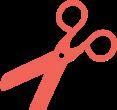
Look around your home for household hazardous waste. That fluorescent bulb you changed months ago? Those old paint cans gathering cobwebs in your garage? The batteries in your old TV remote? We’ll take them!
Place your household hazardous waste in the trunk of your car and visit the HHW facility at 4797 Imhoff Place in Martinez (near the I-680/Highway 4 interchange). We’ll even unload it for you! For hours, directions, and a list of materials we accept, visit: centralsan.org/hhw
Drive away knowing you’ve helped your community and the environ ment. By visiting the facility, you are conserving resources, preventing pollution, and protecting our local waters.
The HHW facility is a great place to leave things behind, but did you know it’s also a great place to pick things up? Our Reuse Room is stocked with
brought in for disposal that are still in usable condition.
often includes paint,
free to Central San customers! Take a look
while
here, and you might find just what you need.




Have you ever wondered what happens to the water that goes down your drain? Join us for a free walking tour, virtual tour, or speaker event to discover how we collect and clean more than 13 billion gallons of wastewater every year!
IN-PERSON WALKING TOURS: After an extended pause during the pandemic, we’re excited to relaunch our in-person tours. Join us for a walk around our wastewater treatment plant in Martinez for a behind-the-scenes look at how we’re making dirty water clean again through engineering and science. You can sign up for one of our quarterly public tours, or contact us to arrange a custom tour for your group. To learn more, visit: centralsan.org/tours

VIRTUAL EXPERIENCE: Get a 360-degree inside look at the waste water treatment process—from the comfort of your home. Our award-winning, interactive Virtual Experience features photos, videos, fun facts, hands-on science activities for kids, hidden prizes, and more. Drop by online, explore, click, and learn more about your sewer system and how you can help protect your pipes and the environment. Visit: centralsan.org/experience
SPEAKERS BUREAU EVENTS: Looking for a speaker for your group or event? We may be able to help! Central San offers free presenta tions on pollution prevention and the world of wastewater. Talks can be in-person or virtual and tailored to your group’s interests. To learn more, contact Ben Lavender at blavender@centralsan.org or (925) 335-7723.
Central San’s new Septic to Sewer (S2S) program provides low-cost financing to help homeowners in our service area connect to the public sewer system and properly abandon their septic tank. Finance up to $50,000 at the current low rate of 2.61%, repayable in annual install ments over a 15-year term via the Contra Costa County Property Tax Roll.
When septic systems fail, sewage can back up into your home, yard, or street. Failing septic systems can contaminate nearby creeks and groundwater, and require expensive emergency repairs. We want to help you avoid all these unwanted surprises! If you’re a homeowner with a private septic system, contact us today to learn more about our S2S program. Visit: centralsan.org/s2s
IN
California is taking important steps to limit the use of toxic PFAS chemicals in many everyday products. However, more work is needed to protect Californians and our beautiful state from these contaminants.
This fall, two pieces of legislation became law that will phase out the use of PFAS chemicals in most textile and cosmetic products manufactured or sold in the state. This will help limit Californians’ exposure to PFAS from items such as clothing, carpets, furniture, and personal care products. It also will help reduce the water contamination that can occur when these products are washed or rinsed down the drain.
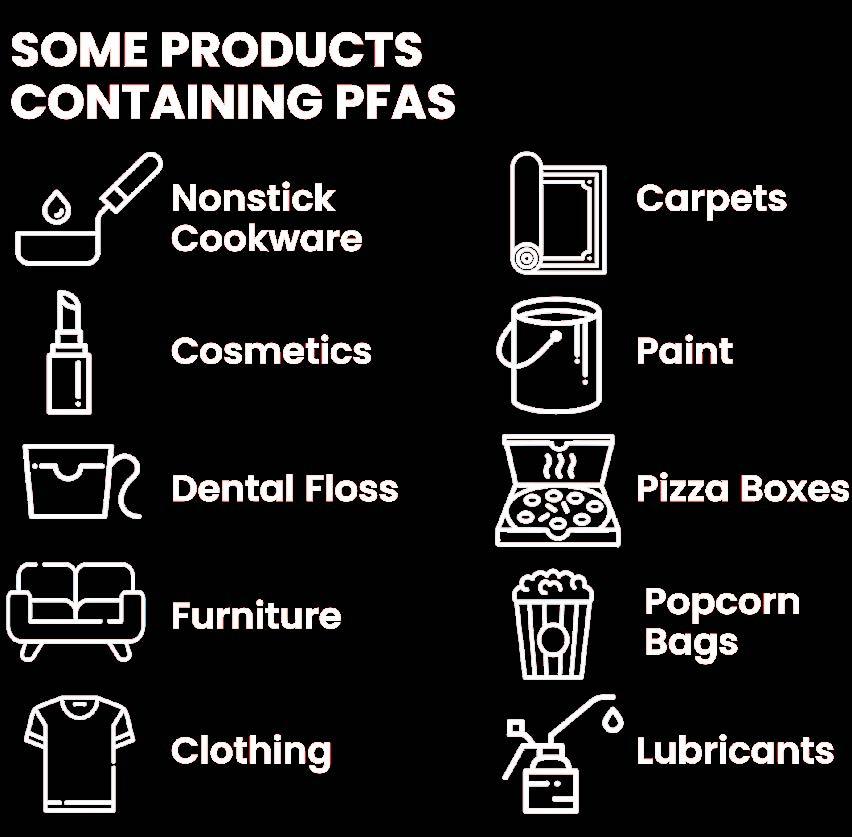
Governor Newsom vetoed a third bill that would have required manufacturers to disclose which products contain PFAS. Without this information, consumers may be exposed to these toxic substances without their knowledge. In addition, the Governor’s veto will make it more difficult for state regulators to identify sources of PFAS and take meaningful steps to control pollution.
Once PFAS enter the environment, there’s no magic bullet to eliminate them. PFAS that enter the waste water stream are a particular challenge for Central San and other wastewater utilities across the country, since current treatment technologies are not designed to remove them. The best solution to PFAS pollution is at the source, by keeping them out of the environment to begin with.
That’s why Central San supports limiting the use of PFAS where safer alternatives are available. And it’s why we advocate for empowering consumers with the information to make safer decisions for themselves, their families, and the planet. Along with our partners across the state, we’ll continue to push for smart regulations for these harmful pollutants.
PFAS (per- and polyfluoroalkyl substances) are manmade, “forever” chemicals used in many common household products including cook ware, clothing, and cosmetics. Due to the widespread use of PFAS, scientists have found these troublesome pollut ants all over the globe, in water, air, soil, animals, and people. Known for their strong chemical bonds, PFAS can build up in the environment and our bodies over time, harming the planet and our health. Studies have shown exposure to PFAS may lead to increased cancer risk, developmental delays in children, and interference with the body’s natural hormones and immune response.
“Out of sight, out of mind” doesn’t work for what goes down the drain. To prevent a nasty clog or pollution of local waterways, please keep these items out of the drain:
With over 1,500 miles of underground pipes, Central San is busy yearround cleaning, maintaining, and repairing our public sewer system. Just like we take good care of these valuable assets, there are simple steps you can take to protect your own investments!
Never flush wipes (even if they claim to be flushable), feminine hygiene products, dental floss, condoms, kitty litter, or other plastic or debris. Flush only human waste and toilet paper. Everything else belongs in the trash can.
If you do experience a clog, avoid chemical products—they’re often ineffective and can harm the environment. Instead, use a plunger or sewer “snake.”
Fats, oils, and grease (FOG) are a leading cause of sewer clogs and overflows. To properly dispose of small quantities of FOG, pour them into a disposable lidded container, like a milk carton or coffee can. Freeze to solidify, then place the container in the trash. Compost food scraps or dispose of them in the garbage, never the garbage disposal.
An Overflow Protection Device (OPD) installed on the clean-out of your sewer lateral provides cost-effective peace of mind and protects your home in the event of a sewer overflow. An OPD works by providing an emergency escape hatch for sewage, allowing the overflow to occur outside your home rather than inside. You can find these inexpensive devices at plumbing supply stores. We recommend that you have a licensed plumber install your OPD since placement is critical for proper function. Keep the device clear of obstructions, like dirt or plants, that might interfere with its operation. Note: An OPD cannot help if a clog occurs between it and the house drains, so be sure to keep your pipes free of the clog culprits mentioned above!
For more information about OPDs, call our friendly Permit Counter staff at (925) 229-7371.
TIP: Bring your used cooking oil or grease to our Household Hazardous Waste Collection Facility. It will be recycled to produce sustainable biofuels, so you’ll be protecting your pipes and the planet, too!
Hi, kids! I’m Toot the Toilet. I’m excited to share that I am starring in a new video called Adventures with Toot: Disappearing Act. I don’t want to give away too much about the story, but I can tell you it took some real movie magic to make the video.
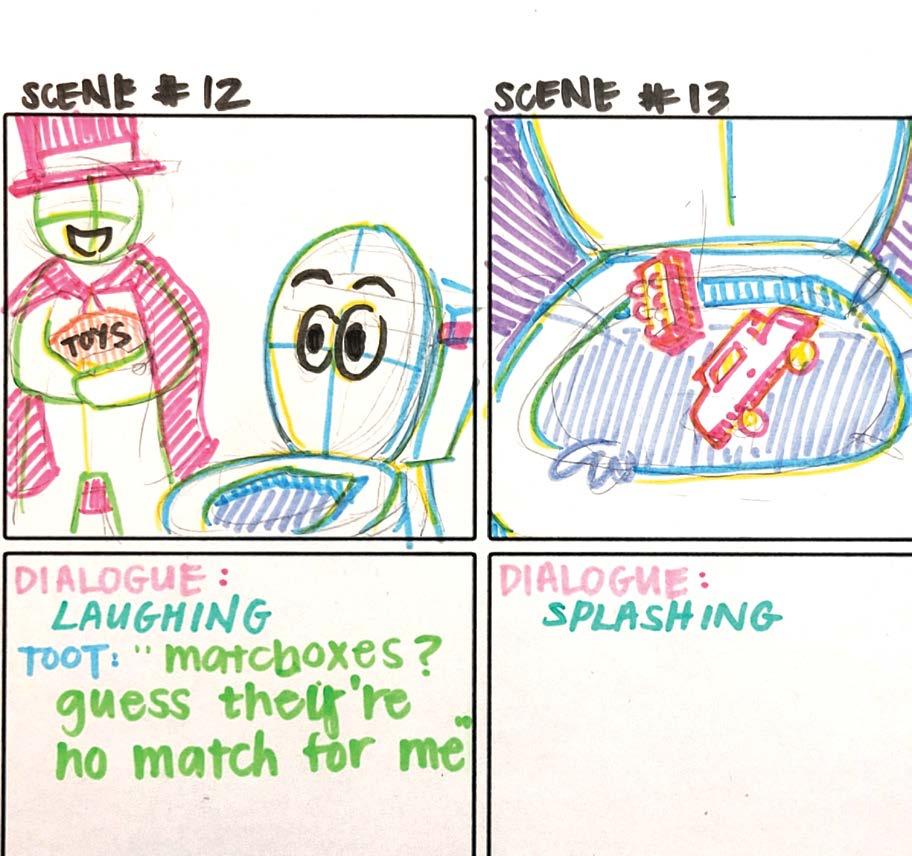
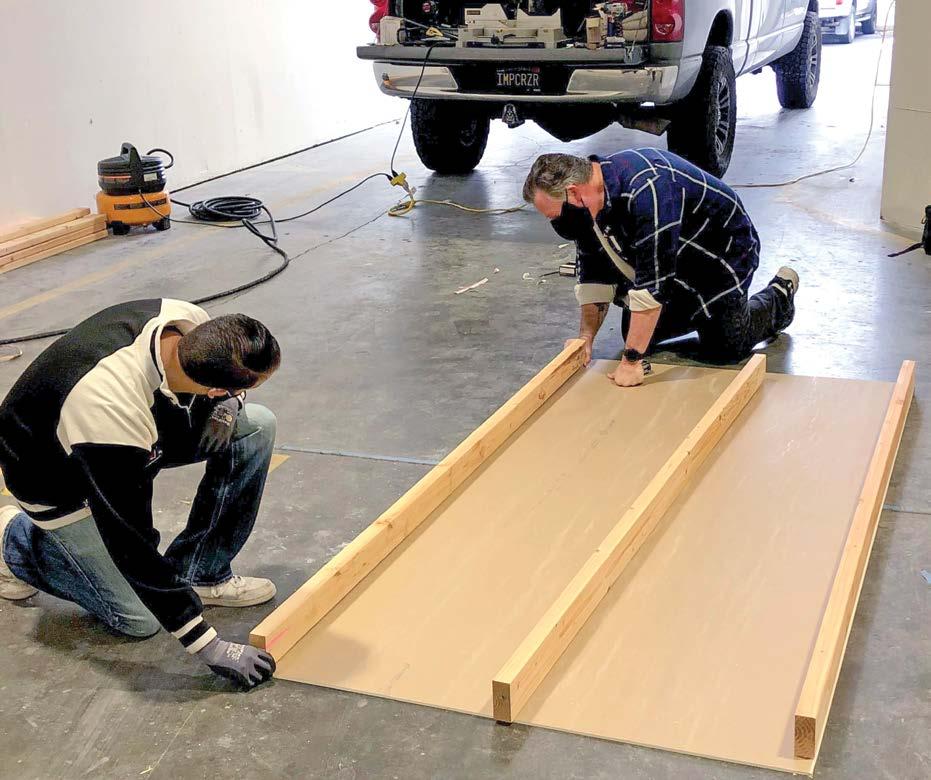
Of course, while movies might look like magic, they’re really not. (They’re kind of like toilets that way.) Take a look behind the scenes to see how we did it!
But before we could film the video, we needed a story! First, we brainstormed ideas, then we wrote a script with all the dialogue and descriptions of the action. We used the script to create storyboards to help us imagine what the video should look like.
Central San produced the new Adventures with Toot video as part of our education programs to help teach kids about preventing pollution and protecting our pipes and environment.
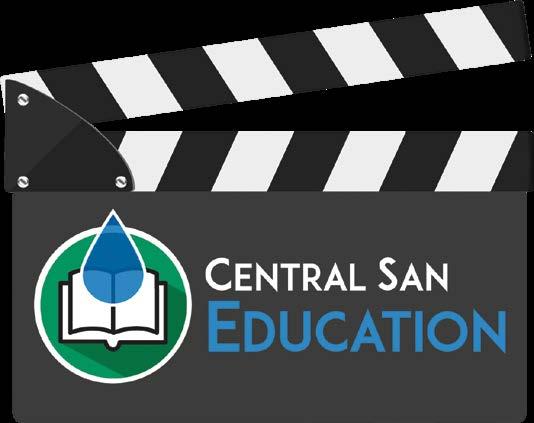
We built a small set from scratch using one of Central San’s warehouses for a soundstage. Here’s what it looked like with all our lights, cameras, and sound equipment.
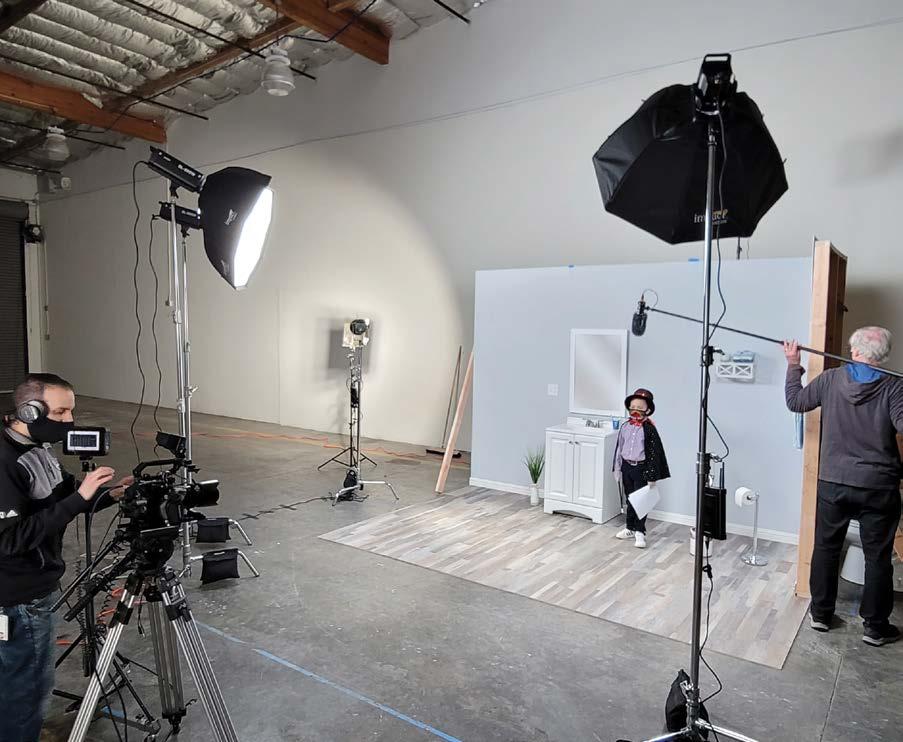
Finally, filming day arrived! A very talented young local actor plays Toot’s friend Mateo. Even though Toot is one of the stars, he didn’t actually appear in video when we first filmed it. Instead, we used another toilet—and sometimes other objects or people—for Toot’s stand-in.
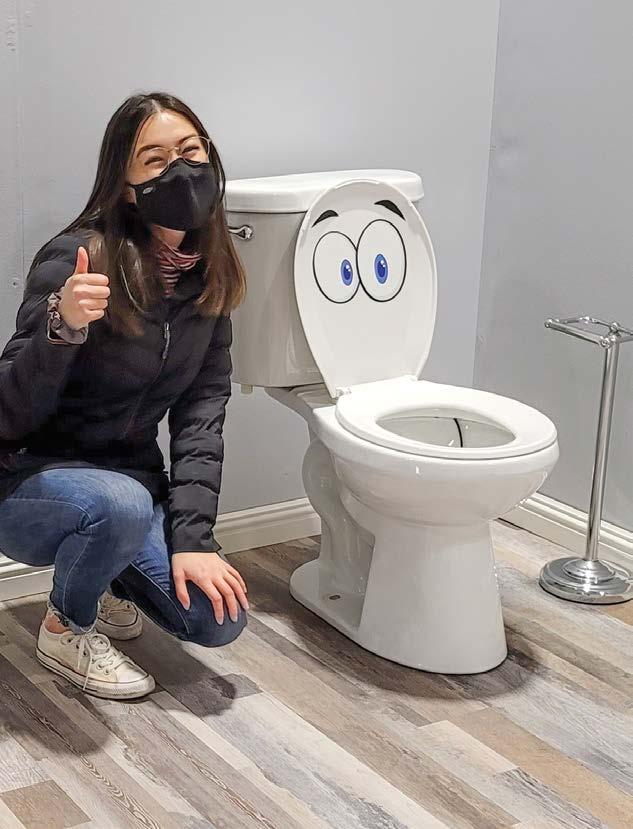
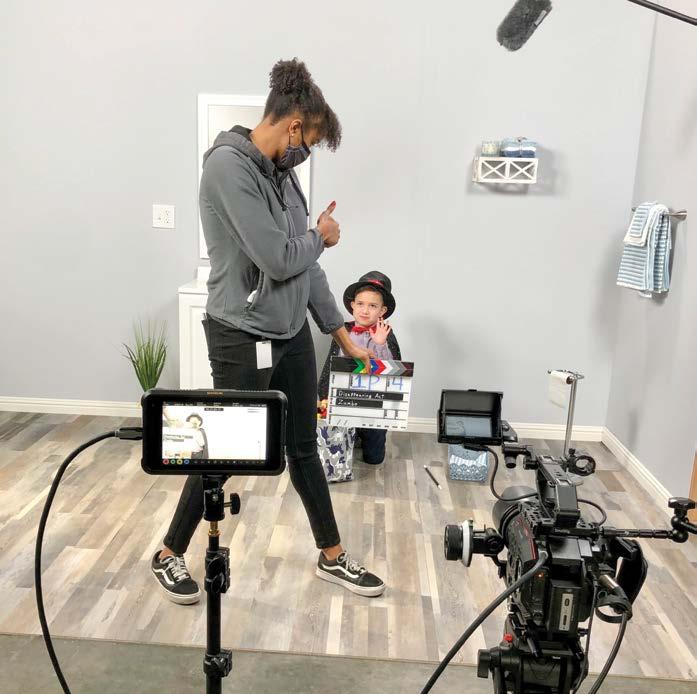
After we finished filming, there was still a lot of work to do. We used computers with special software to edit the video. Toot was added via computer animation, along with other special effects.
Another very talented actor provided Toot’s voice, recording all the lines remotely. After the video, special effects, and voiceover were all edited together, the music was the final piece.
The last—and most important—step is sharing the video with you! Watch Adventures with Toot: Disappearing Act on Central San’s website at: centralsan.org/learn. I hope you enjoy it!
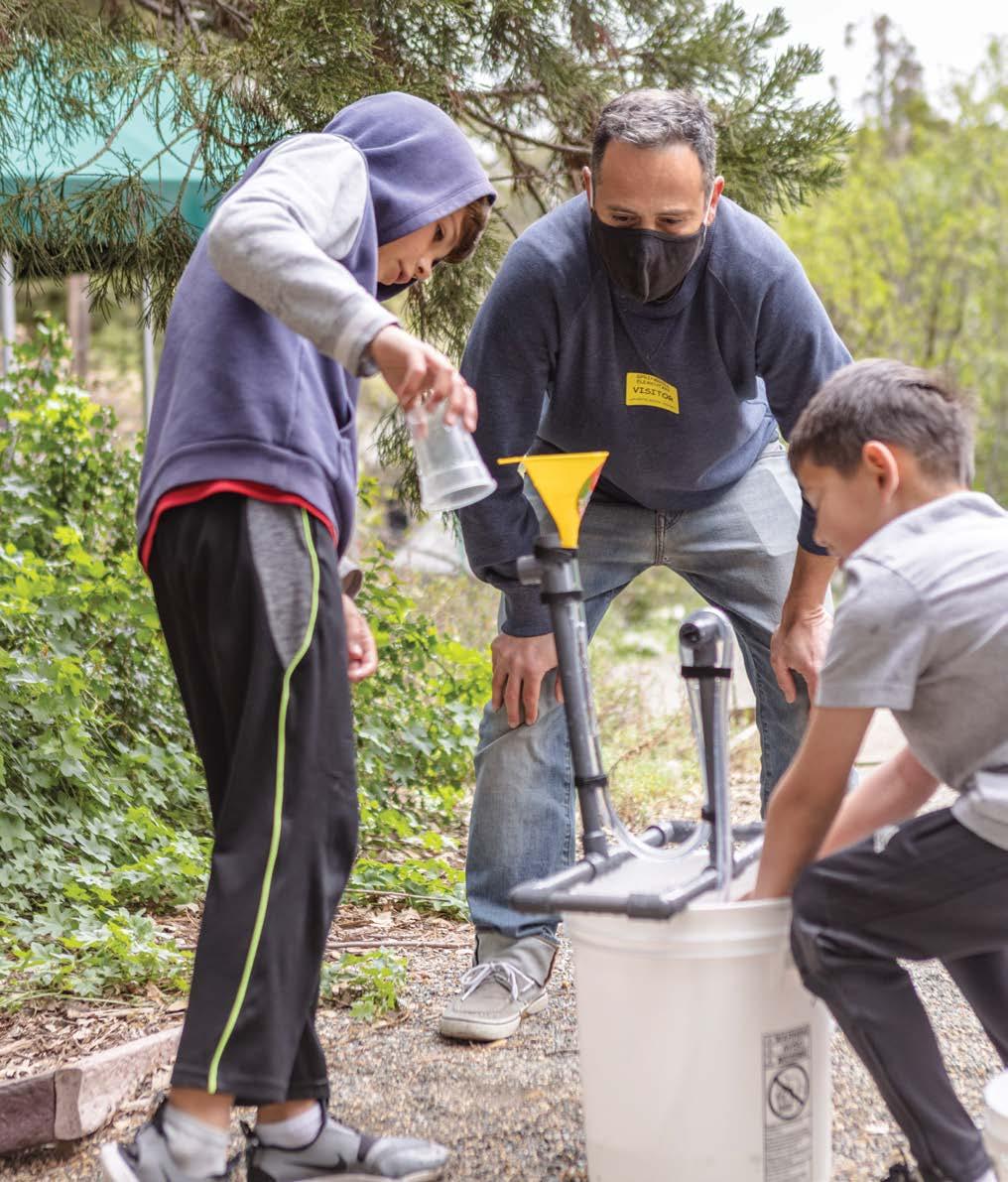
Central San offers award-winning, hands-on wastewater science and engineering programs at no cost to schools in our service area. This past school year, nearly 20,000 local students participated. Our goal is to help students of all ages understand what happens to our dirty water after it goes down the drain, and how our actions are connected to consequences in our local environment. Want to see our programs in your school? Ask your favor ite teacher to sign up today! Visit centralsan.org/learn to learn more, or contact Ben Lavender at (925) 335-7723 or blavender@centralsan.org.
The stuff we flush down the toilet or wash down the bathroom drain may seem like it magically disappears, but it really doesn’t. It sticks around and can clog pipes and cause other problems if it's not meant for our system. Some items we use in the bathroom, like shampoo or toothpaste, are perfectly fine for the drain, while others can cause real damage. The three p’s (pee, poop, and toilet paper) are the only things that should be flushed down the toilet!
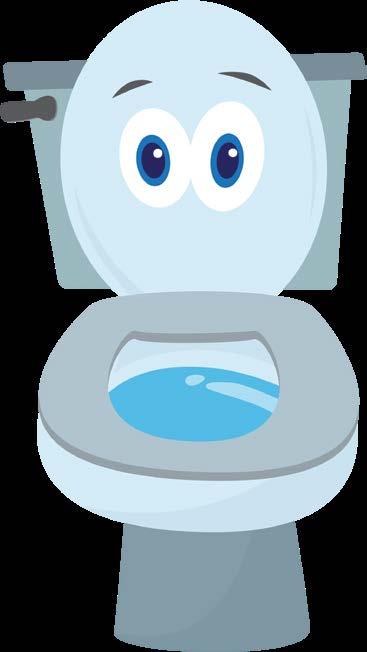
Can you help Toot find all the items that don’t belong in the toilet and don’t disappear down the drain? First, find the things in the list below and cross them out in the picture. Then, color in the rest of the picture however you like!
When you’re done, cut out this page and mail it to:
TOOT THE TOILET CENTRAL SAN 5019 IMHOFF PLACE MARTINEZ, CA 94553
Include your name and return address, and we will send you a prize! Thanks for being a Pipe Protector!
Wastewater treatment & HHW disposal in Concord & Clayton by contract. HHW disposal only.
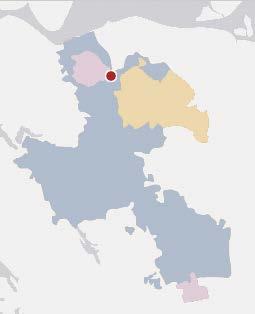

Central San headquarters, treatment plant, HHW Facility & Residential Recycled Water Fill Station.
Board meetings are open to the public and are usually held on the 1st and 3rd Thursday of each month at 2:30 p.m. in the Central San Board Room, 5019 Imhoff Place, Martinez. Meetings can be live-streamed at centralsan.org
